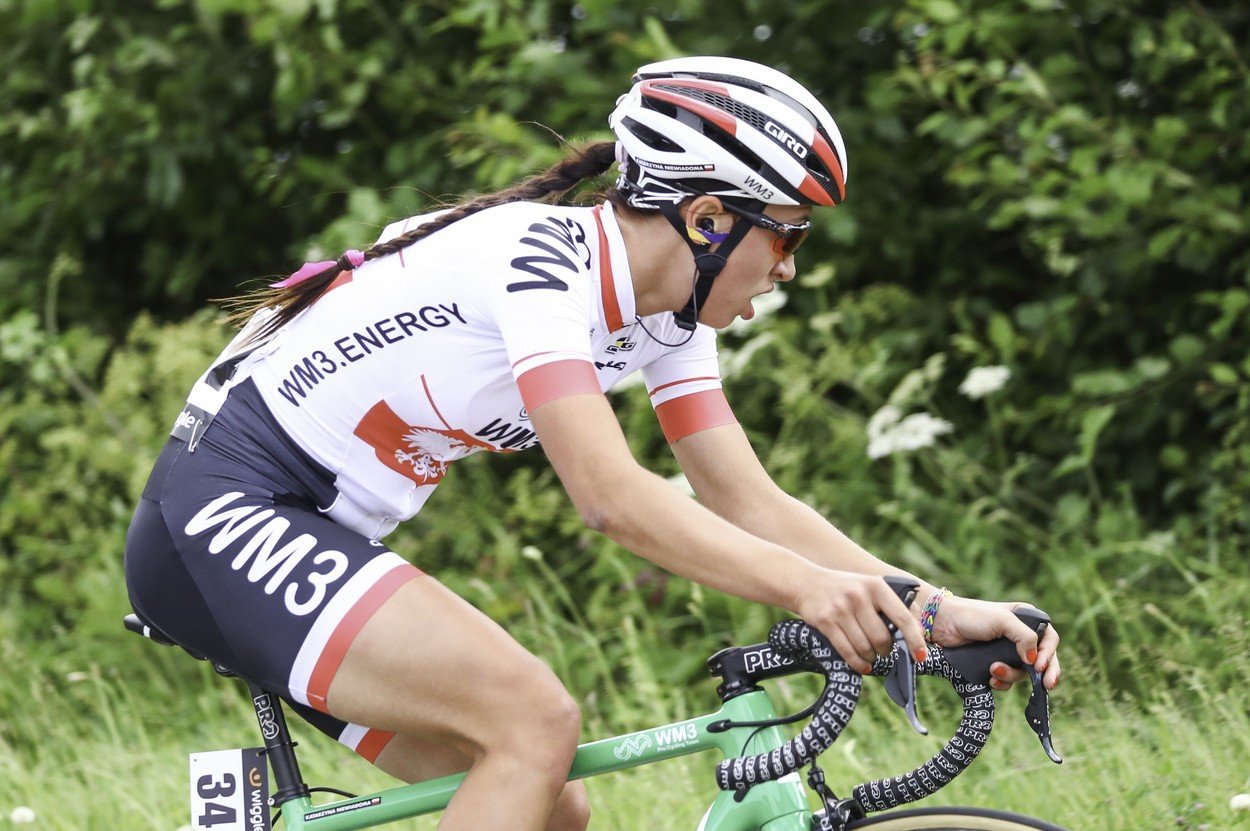“When you look at the pictures of her racing – she does not have a poker face at all. She wears everything on her face.”
This is Laura Winter of Voxwomen Insider commenting on Kasia Niewiadoma’s incredible performance at Trofeo Alfredo Binda this spring. Winter went on to celebrate Niewiadoma’s refreshingly honest approach to racing and her refusal to acknowledge the gender divide as it relates to the tactics she uses to win.

Speaking of the attack that brought her to victory at Binda, Niewiadoma, who races for Canyon-SRAM, said she was inspired by Vincenzo Nibali’s performance at Milan-San Remo. Noted for their exceptional descents, both riders attacked early and pushed through the gruelling final stretch on their own. As Nibali said of his win, “the final kilometres were endless. It was pure suffering.” We can imagine Niewiadoma would agree.
Nevertheless, they both attacked and didn’t look back – demonstrating that the gritty, passionate determination needed to win has nothing to do with gender.
Praised for her fearlessness, the fact that Niewiadoma is being celebrated by others in the community for “wearing everything on her face” speaks to the changing dynamics in a lineage of sexist discourse that has haunted women’s cycling since the start.
“Bike face” can now be a source of pride and a way of complimenting the prowess of other riders, but this was not always the case. As we’ve previously discussed, in an 1895 article in The Literary Digest, “bike face” was described by experts as a condition that could afflict women who rode bicycles.
The article reads, “over-exertion, the upright position on the wheel, and the unconscious effort to maintain one’s balance tend to produce a wearied and exhausted ‘bicycle face’.” Used alongside other tactics to scare women away from cycling, which offered them a completely new level of independence, “bike face” was just one of the supposed negative physical effects listed.
Most “warnings” were based around the physical transformation that a women’s body would undergo, for example, that she would become bowlegged from too much pedalling. Unfortunately, although some of these myths have been reclaimed to empower, there are still a lot of problems about how women’s bodies are talked about in the world of cycling.

Well-publicized occurrences, including the questionable handling by British Cycling of the allegations against then coaching-director Shane Sutton, accused by Jess Varnish of using degrading language to intimidate her, show that there is still a lot of work to be done. Reports of fat and body shaming are all too common, and many women end up walking away from the sport because the environment is toxic.
Change is happening though. With discussions of diversity and inclusion becoming an increasingly central part of the cycling discourse, it’s worth acknowledging signs of progress. Over a century after “bicycle face” was put forth as a sexist warning, it is now something to be proud of. Riders like Niewiadoma are setting a new standard for how we talk about the gender divide in racing and aligning themselves in their rightful place, alongside their male counterparts. There is still a long way to go in terms of diversity and equality, but for now, we are happy to see these riders being celebrated for showing their strength and determination on their faces while they ride.





